
St Mary's is the largest and most populous island of the Isles of Scilly, an archipelago off the southwest coast of Cornwall in England.
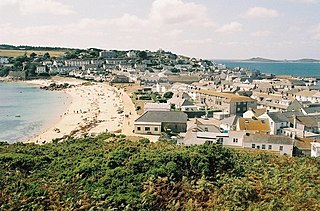
Hugh Town is the largest settlement on the Isles of Scilly and its administrative centre. The town is situated on the island of St Mary's, the largest and most populous island in the archipelago, and is located on a narrow isthmus which joins the peninsula known as the Garrison with the rest of the island.

St Martin's is the northernmost populated island of the Isles of Scilly, England. It has an area of 237 hectares (0.92 sq mi).
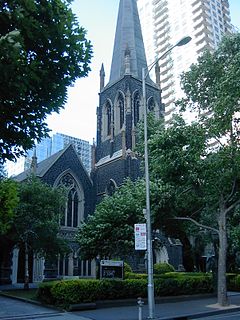
Wesley Church is a Uniting Church in the centre of Melbourne, in the State of Victoria, Australia.

St Nicholas's Church, Tresco, is a parish church in the Church of England located in Tresco, Isles of Scilly, UK.

St Mary's Church, St Mary's is a parish church in the Church of England located in Hugh Town, St Mary's, Isles of Scilly, UK. The Church was consecrated on 7 September 1838 and replaced the church at Old Town which was inconvenient for the Hugh Town population and in need of repair.
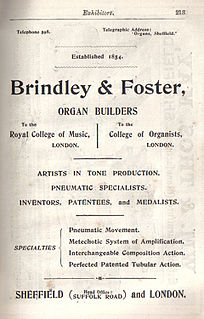
Brindley & Foster was a pipe organ builder based in Sheffield who flourished between 1854 and 1939.
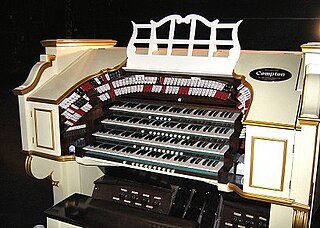
John Compton (1876–1957), born in Newton Burgoland, Leicestershire was a pipe organ builder. His business based in Nottingham and London flourished between 1902 and 1965.
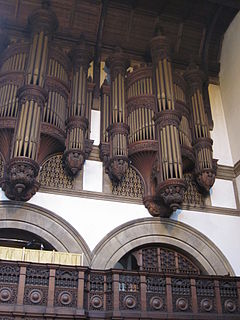
James Jepson Binns was a pipe organ builder based in Leeds, West Yorkshire, England.
The Wesleyan Methodist Church was the majority Methodist movement in England following its split from the Church of England after the death of John Wesley and the appearance of parallel Methodist movements. The word Wesleyan in the title differentiated it from the Welsh Calvinistic Methodists and from the Primitive Methodist movement, which separated from the Wesleyans in 1807. The Wesleyan Methodist Church followed the Wesleys in holding to an Arminian theology, in contrast to the Calvinism held by George Whitefield, by Selina Hastings, and by Howell Harris and Daniel Rowland, the pioneers of Welsh Methodism. Its Conference was also the legal successor to John Wesley as holder of the property of the original Methodist societies.

The Durham Street Methodist Church in Christchurch was the earliest stone church constructed in the Canterbury region of New Zealand. It is registered as a "Historic Place – Category I" by Heritage New Zealand.

Burnley, in Lancashire, England, has a long history of religious worship, dating from at least before 1122 in the case of the Church of England. The chapel at Towneley Hall was the centre for Roman Catholic worship in Burnley until modern times. Well before the Industrial Revolution, the town saw the emergence of many non-conformist churches and chapels. In 1891 the town was the location of the meeting which saw the creation of the Baptist Union of Great Britain and Ireland. In the late 19th century a Jewish synagogue was established, and in recent times evangelical and free churches have appeared, as well as a large purpose-built mosque.

Parliament Street Methodist Church is a Methodist church on Parliament Street in Nottingham.
Halixfax Place Wesleyan Chapel was a former Methodist Chapel in Nottingham from 1798 to 1930. The building dating from 1847 had the highest ceiling of any Wesleyan Methodist church in England. The building was finally demolished in 1966.

Pilgrim Uniting Church is a church in the heart of the City on Flinders Street, Adelaide in South Australia. It is a church of the Uniting Church in Australia.
King Street Methodist Chapel was a Wesleyan Methodist chapel in Derby, Derbyshire.
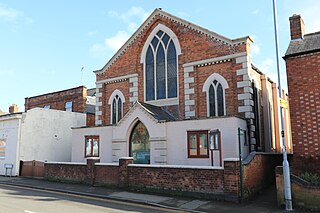
Sileby Primitive Methodist Church is a Methodist church in Sileby, Leicestershire.

Wesleyan Methodist Church, Hugh Town, Isles of Scilly was a Wesleyan Methodist church in Hugh Town, Isles of Scilly from 1790. It is currently Grade II listed and functions as an office of the Council of the Isles of Scilly.
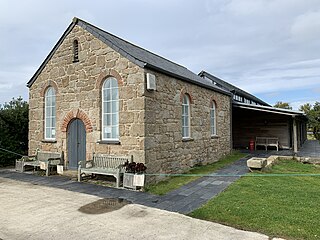
The Bible Christian Chapel, St Agnes was a Bible Christian chapel in St Agnes, Isles of Scilly.

The Methodist Church, St Martin's, Isles of Scilly is a Grade II listed chapel in St Martin's, Isles of Scilly.


















